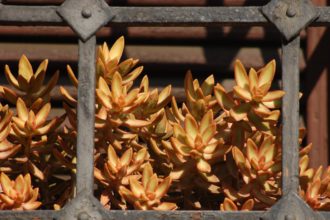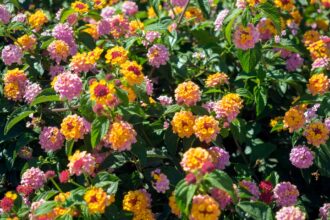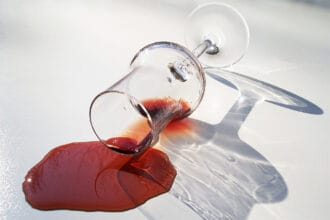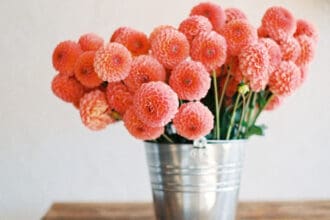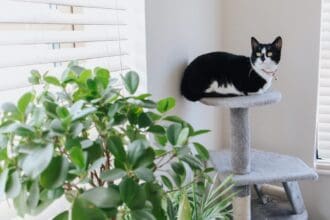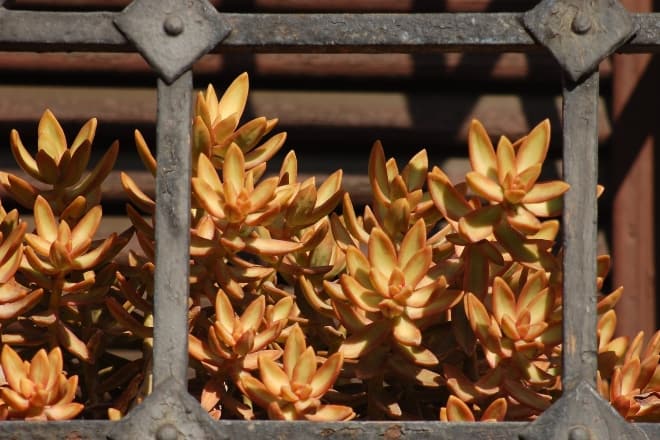
via: Pixabay / Barbara808
Sedum Adolphii, more commonly known as Golden Sedum or Golden Glow, is a gorgeous plant that can brighten up any home or garden. And the best part is that it’s relatively low maintenance, as long as you know how to care for succulents.
All you have to do to keep your Sedum Adolphii happy, healthy, and thriving is to follow the simple steps below.
Contents
What is a Sedum Adolphii succulent?
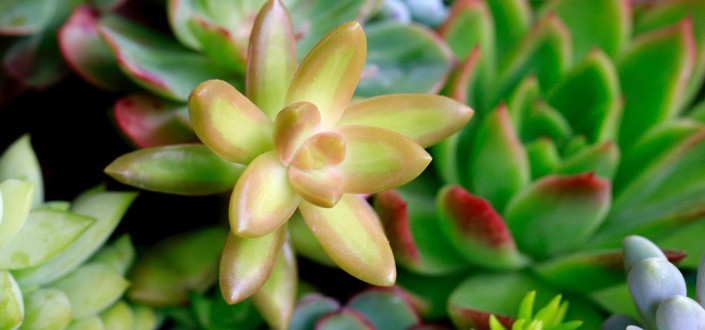
via: Unsplash / Sandy Millar
The Golden Sedum is a perennial succulent native to Mexico. The plant is now a popular fixture in households around the world due to its hardiness and beautiful rosettes with fleshy, football-shaped leaves.
This succulent is a fast grower and can quickly reach up to 10–12 inches (25.4–30.4 cm) in height and some 2 feet (60.9 cm) in width.
Individual rosettes grow up to about 1.5 inches (3.8 cm) long. Their leaves are evergreen with a slight pinkish or yellow-gold tint. When exposed to strong sunlight, the tips will often turn red.
Overall, Sedum Adolphii is fairly easy to care for and is not toxic to humans and animals.
Why Is Knowing How To Grow And Care For Sedum Adolphii Important?
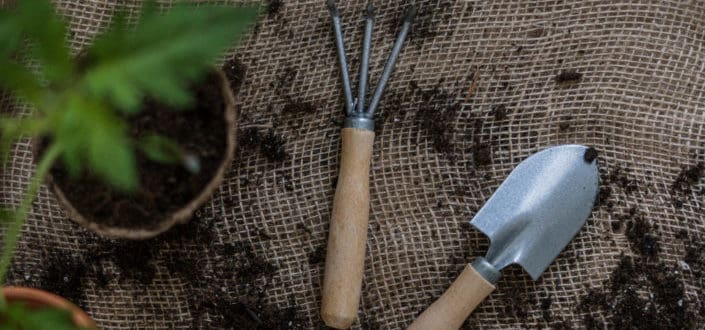
via: Pexels / cottonbro
To put it bluntly, if you don’t look after Golden Glow succulents, it will die. For all their resilience, succulents have their needs too! The good news is that caring for Golden Sedums is not rocket science — you just need to follow a few basic rules of thumb.
How To Grow And Care For Golden Glow (Sedum Adolphii)
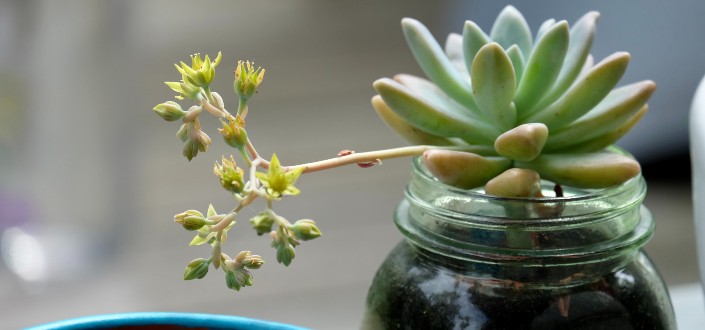
via: Unsplash / Max Smith
Like most succulents, Sedum Adolphii are hardy and fairly low maintenance. That said, they do have their specifics and unique needs — especially when it comes to their sensitivity to harsh light and low temperatures. To learn about that (and a lot more to boot), keep reading!
1. Double-Check That You Have The Right Type Of Succulent
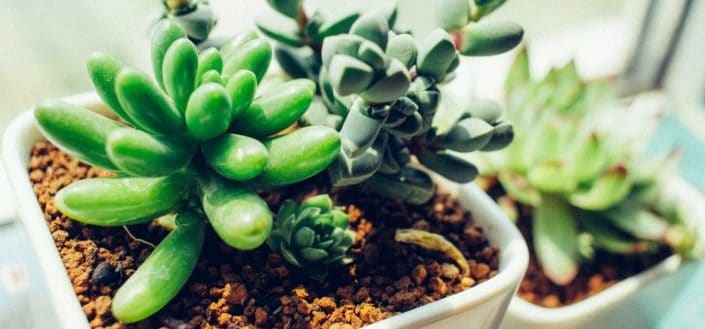
via: Unsplash / Xiao Zijin
So far, botanists have identified over sixty succulent families, each containing hundreds and sometimes even thousands of individual species. And as if that weren’t enough, many types of succulents look deceptively similar — and that goes for both indoor succulents and outdoor succulents.
Golden Glow is no exception: it is often confused with Sedum nussbaumerianum, also known as Coppertone Sedum. In fact, they look so much alike that some botanists argue that they should be lumped together as a single species!
For the time being, though, the two remain separate plants. The easiest way to tell them apart is by looking at the color of their leaves and stems. Sedum nussbaumerianum develops a much deeper orange tinge when exposed to bright sunlight, and its stems tend to be less upright.
2. Ensure You Have The Right Soil Mix

via: Unsplash / Gabriel Jimenez
Golden Sedum plants are not too fussy and can grow in most types of soil mixes. However, they prefer porous, sandy, and well-draining mixtures. Waterlogged soil can result in root rot and a host of other diseases.
For best results, use ready-made cacti and succulent mix or sandy soil. It’s also a good idea to throw in some gravel at a 1:1 ratio for maximum drainage.
3. Choose The Best Spot To Plant Your Golden Glow
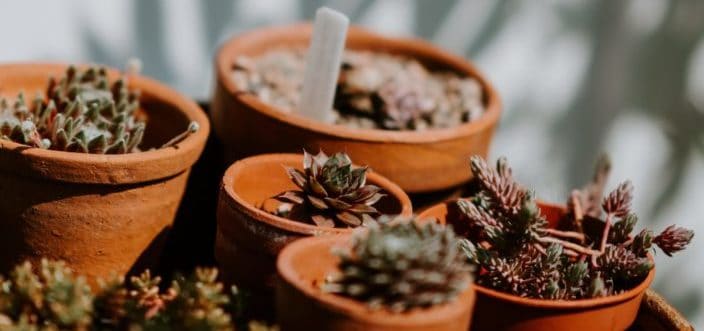
via: Unsplash / Annie Spratt
This succulent like to live outdoors. They are drought tolerant and grow well under strong natural light. You can use them as hanging plants or green roofing. They are also an ideal fit for rock gardens, where they pair well with other Sedum varieties, as well as flowering plants such as Golden Goddess and Sedum Voodoo.
The best place to plant your Golden Glow is a spot in your garden that gets six hours of full to partial sun in the morning. However, if you live in an area where the temperature drops below 20°F (-6.7°C), you should plant it in a pot and bring it indoors when it gets cold. Choose a container made of unglazed clay, as it will allow any excess moisture to evaporate through the sides of the pot in case of overwatering.
4. Make Sure Your Plant Gets Enough Light

via: Unsplash / Dave Hoefler
This succulent requires at least six hours of full to partial sun every day, preferably in the morning. The scorching afternoon sun in the summertime can burn its leaves and cause the tips to develop a gold or reddish-orange tint. If you notice the rosettes changing color, it is a sure sign that the plant is stressed.
If you are growing a Golden Glow plant indoors, choose a spot near a window that gets a fair amount of sunlight for four to six hours each day. If that’s not an option, consider getting a grow light to ensure that your plant can develop properly.
5. Know How To Water Sedum Adolphii
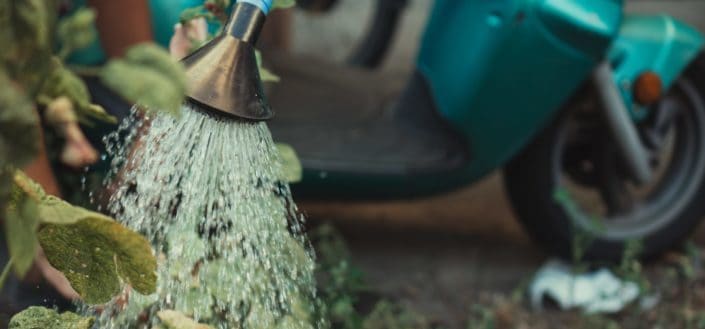
via: Unsplash / Jonathan Kemper
The water needs of Golden Sedums are pretty standard. If you know how to water succulents, you shouldn’t have any problems in this department.
For best results, use the “soak and dry” method, making sure that the soil mix dries out completely between waterings. It’s always a good idea to use a hygrometer to test the moisture level of the soil before watering. Alternatively, you can use a stick: simply insert it about an inch under the topsoil. If it comes out dry, it’s time to water your Sedum Adolphii.
You should also bear in mind that the soil will hold on to moisture for much longer in the colder months. So, in case of doubt, always err on the side of underwatering in the wintertime.
6. Set The Temperature Right
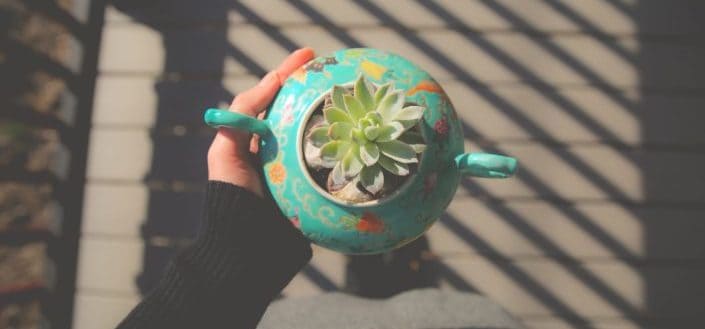
via: Unsplash / Ava Sol
Golden Glow succulents will tolerate heat but are not cold hardy. They are suitable for outdoor growing in US Zone 9a (minimum 20°F/-6.7°C). If it gets colder in your area, bring your plant indoors when it’s chilly outside.
7. Know How To Propagate Sedum Adolphii
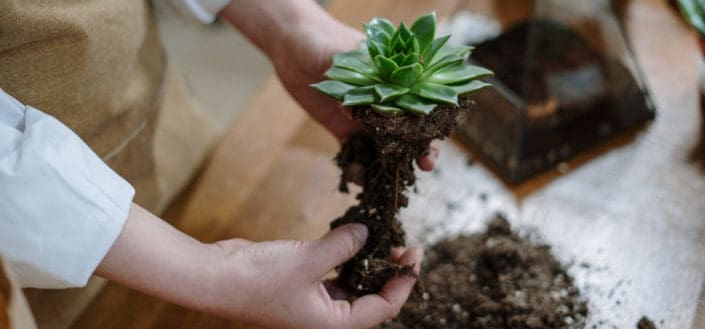
via: Pexels / cottonbro
Golden Glow plants are easy to propagate and grow rather quickly. Knowing how to propagate succulents will help you a great deal when breeding. Ideally, you want to divide your plant once every four years to encourage new growth.
Propagation By Leaf Cuttings
Choose a firm and healthy-looking leaf. Gently remove it from the mother plant using a twisting motion. Aim for a clean pull that leaves no part of the leaf on the stem. If you pull out a portion of the stem with the leaf, that’s fine. The cleaner the pull, the better your chance of successful propagation.
Next, put away the leaf in a shaded and dry spot. Let it heal and grow calluses for a few days. Then, lay it on a well-draining soil mix, watering the soil whenever it dries out completely.
Soon enough, you will notice new growth. Once the mother leaf has withered away, and the roots and first rosette have formed, plant the young plant in the soil mix. Care for it as you would for an adult Golden Glow.
Propagation By Stem Cuttings
Get a sharp pair of scissors, garden shears, or a knife. Sterilize your utensil and use it to cut a small portion of the stem away from the cluster. Place the cut in a shaded and dry spot, allowing it to harden and grow calluses for several days.
Then, lay the hardened cut on well-draining soil and water it when it is completely dry. Plant the new growth when the roots and first rosette appear.
8. Know When To Expect Blossoming
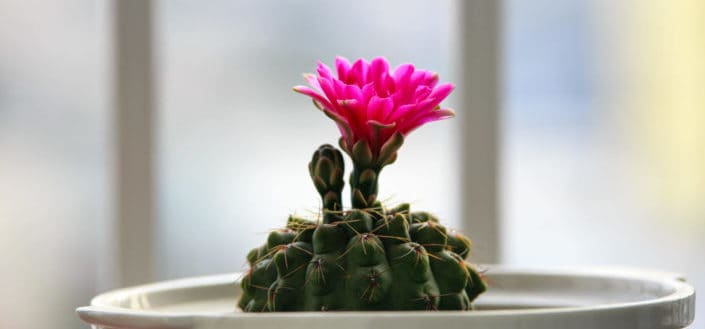
via: Pexels / Quang Nguyen Vinh
You can expect your Golden Glow to blossom in late winter or the spring. The flowers are white and yellow and star-shaped.
9. Learn How To Repot Your Golden Glow Properly
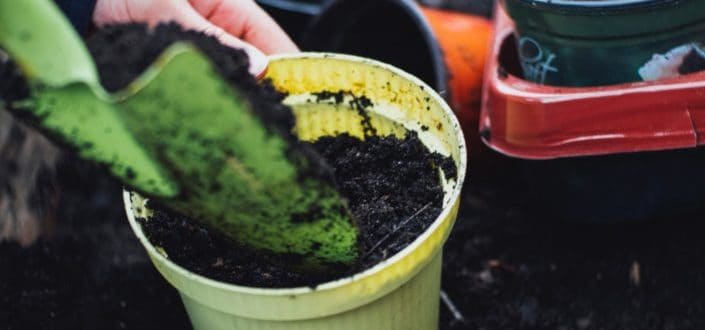
via: Unsplash / Markus Spiske
When repotting Sedum Adolphii succulents, make sure the roots are at the same depth in the new pot as in the previous one.
10. Know When And How To Fertilize
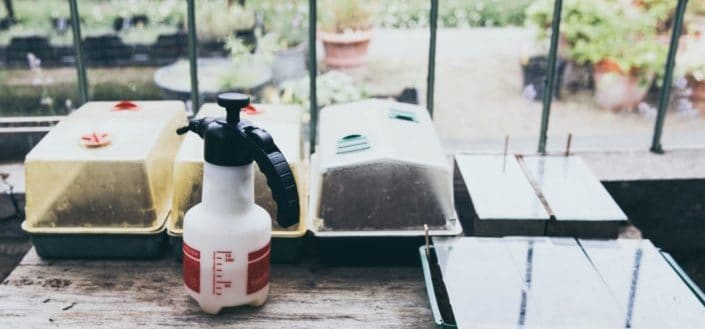
via: Unsplash / Stella de Smit
Golden Sedums only need to be fertilized during the active growing season in the spring and summer months. Feed your plant once a month using a diluted fertilizer for cacti and succulents at ¼ strength.
11. Read Up On The Causes Of Common Problems

via: Unsplash / Tran Mau Tri Tam
Golden Glow succulents are fairly resistant to diseases and pests. However, they can still get sick in extreme environmental conditions or if you don’t care for them properly.
By far, the most common cause of health issues is root rot due to overwatering and waterlogged soil. Root rot, in turn, results in an infection that can spread rapidly throughout the plant and even kill it.
A telltale sign of root rot is the leaves developing a yellow or brown tint. If you notice any discoloration, cut out the infected part right away using sharpened and sterilized garden shears.
Then, slowly remove the plant from its soil and shake off the excess dirt from the roots. Carefully inspect the roots for signs of rotting and cut off any compromised parts. Allow it to dry out completely before replanting it in fresh, well-draining soil.
Sunburn is another common problem with Golden Glow succulents. The tip of the leaves turning red is a typical symptom of the plant being exposed to more sunlight than it can handle.
If you notice any redness, move the plant to a more shaded area. But what if it is planted in the ground and you cannot move it without transplanting it? In that case, consider placing a shade or planting a taller bush or a tree to protect it from the sun.
More Awesome Succulents
Are you curious to learn about other gorgeous succulent species?
- To warm up, check out Sempervivum arachnoideum.
- Then, read our post on the aptly named bear paw succulent.
- Finally, learn how to care for Crassula rupestris.
In Conclusion
Did you enjoy our guide on growing Sedum Adolphii? As you probably can tell by now, looking after a Golden Glow plant is fairly straightforward, especially if you already know how to care for succulents. All you need is the right soil mix, a good amount of natural light, a well-draining pot, some fertilizer, and a passion for succulents!


